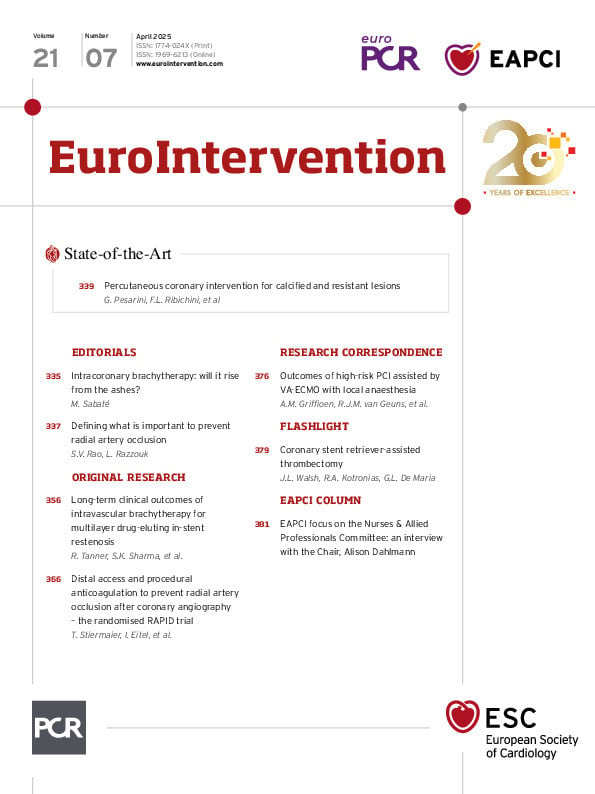Intravascular brachytherapy (IVBT) was implemented in clinical practice in late 1990s, before the advent of drug-eluting stents (DES). The rationale for its use was the ability of radiation therapy to treat proliferative benign processes such as exuberant keloid scar formation or ocular pterygia, among others12. In-stent restenosis (ISR) was considered a prime target for IVBT, as it is mainly induced by an excess of neointimal proliferation. In this context, IVBT demonstrated an outstanding reduction in the rate of repeat revascularisation345. However, several limitations offset its initial benefit, such as late thrombosis, edge effect and late catch-up phenomenon6789. Further, the logistics and the regulatory process to implement IVBT in the cath lab were cumbersome, limiting its widespread adoption. Eventually, the subsequent development of DES sidelined the technique in most cath labs around the world.
In this issue of EuroIntervention, Tanner et al report the 3-year outcomes of patients with multilayer drug-eluting ISR treated with IVBT10. This was an observational retrospective study that comprised patients treated with and without IVBT between 2012 and...
Sign up for free!
Join us for free and access thousands of articles from EuroIntervention, as well as presentations, videos, cases from PCRonline.com

